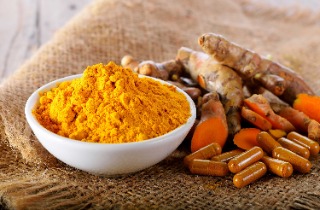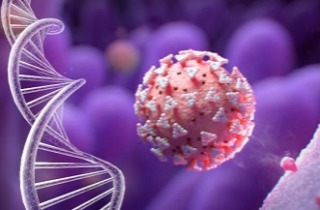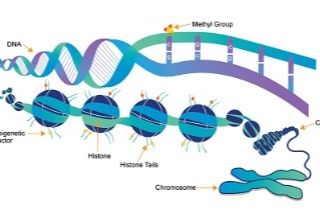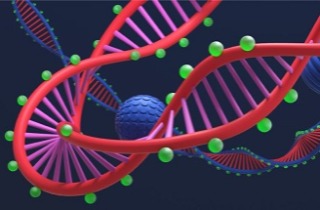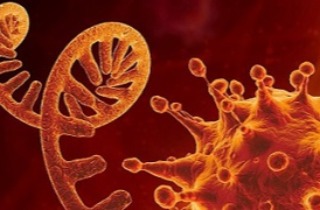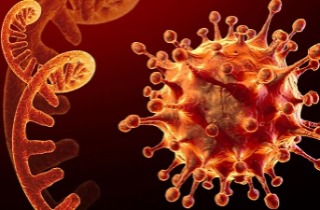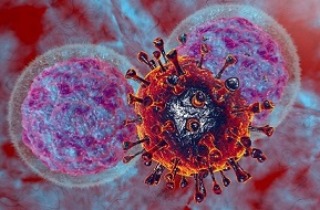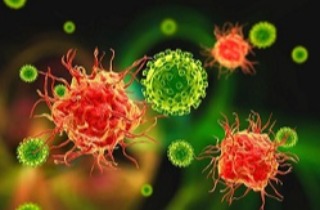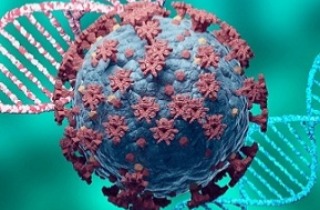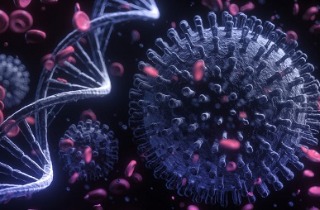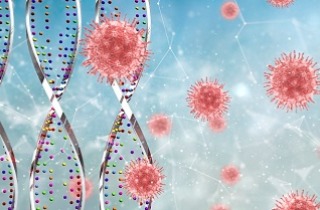The U.S. Food and Drug Administration had the opportunity to improve COVID-19 vaccine labeling — but according to a team of medical and public health experts, the agency refused to make the changes.

childrenshealthdefense.org
(fair use applies)
Experts ‘Astounded’ After FDA Rejects Request to Add Health Risks to COVID Vaccine Labels
The U.S. Food and Drug Administration had the opportunity to improve COVID-19 vaccine labeling — but according to a team of medical and public health experts, the agency refused to make the changes.
By Michael Nevradakis, Ph.D.
06/12/23
The U.S. Food and Drug Administration (FDA) had the opportunity to improve COVID-19 vaccine labeling — but according to a team of medical and public health experts, the agency refused to make the changes.
In an op-ed published last week in The Hill, Peter Doshi, Ph.D., Linda Wastila, Ph.D., and Kim Witczak wrote that the FDA rejected their petition to make changes to FDA-approved labels for the Pfizer and Moderna COVID-19 vaccines, even though the labels, they said, are “obsolete, misleading and out of touch with regulators elsewhere.”
The trio were among a team of nine experts from the Coalition Advocating for Adequately Labeled Medicines (CAALM) who submitted a citizen petition to the FDA on Jan. 31.
Writing in The Hill, the three said their petition tried to fix the issues with the labels “by asking the FDA to make critical changes to official product labels,” that would reflect the vaccines’ lack of prevention of transmission or infection and risks pertaining to safety, efficacy and adverse events.
The petitioners argued that “Incomplete, inaccurate, or misleading labeling of any medical product can negatively impact the health and safety of Americans, with global ramifications considering the international importance of FDA decisions.”
However, in a 33-page response letter delivered on April 18, the FDA “denied almost every single request” except for one.
Two of the petitioners who spoke with The Defender said they were “astounded” by the FDA’s response, which they characterized as an example of “masterful doublespeak.”
“In a nutshell, my response to the FDA: astounded,” said Wastila. “The lack of due consideration of our requests, coupled with the language, which was circular, condescending, contradictory and confusing. We are still parsing out their masterful doublespeak.”
Referencing the FDA’s claims that vaccines do not need to prevent transmission or illness, Wastila, professor and chair in geriatric pharmacotherapy at the University of Maryland School of Pharmacy, said:
“FDA, CDC [Centers for Disease Control and Prevention], NIH [National Institutes of Health], the White House and media still aggressively promote these products as preventing infection and transmission.
“The majority of Americans believe that they are receiving a product that prevents infection and transmission. This is the message they trust. So, they go out and get vaccinated and boosted to protect grandma, to travel safely, to get back to normal. To do the right thing.”
Witczak, a drug safety advocate and president of Woody Matters, a nonprofit advocacy group, told The Defender the agency’s response “was laced with hypocrisy and dismissive statements towards safety issues raised in petition,” but “shined a light into how the FDA leadership views safety and efficacy of the mRNA COVID vaccines.”
She also cited the timing of the FDA’s response, which came on the same day the original COVID-19 vaccines were replaced by the bivalent vaccines under the FDA’s Emergency Use Authorization (EUA). She said:
“I find it interesting we received the response on the same day the FDA rescinded the BLA [Biologics License Application] of the monovalent COVID products from Pfizer and Moderna. Now technically the only products available are the EUA bivalent products.
“I thought EUA products required an emergency and the national emergency was revoked April 10 and expired on May 11.”
Wastila also questioned the timing of the FDA’s response, telling The Defender:
“The timing of FDA’s response is curious — it coincides with FDA’s announcement that they no longer recommend the original two-series monovalent product, which means there are no BLA Pfizer COVID-19 vaccines effectively available on the market, which (presumably) includes Comirnaty and Spikevax, the fully licensed products.
“The only products recommended are the EUA products. And where is the emergency? … I’m no lawyer but between the fuzziness of the EUA/BLA boundary and the lack of a public health emergency, how can EUA COVID-19 products still be promoted?”
“Whatever one thought of the initial shots, people are now getting boosted indefinitely with little reliable information about scientific developments,” the petitioners wrote in The Hill. “Product labeling should be informative and accurate, not promotional. The law requires it, and following the law shouldn’t be optional.”
‘FDA’s double standard harms patients’
In the FDA’s response, Peter Marks, M.D., Ph.D., director of the FDA’s Center for Biologics Evaluation and Research, said the agency had “carefully reviewed the Petition” and decided to grant “one of your requests, related to revisions to the labeling for one vaccine to describe updated clinical trial data regarding the vaccine.”
“However,” Marks added, “we conclude that the Petition does not contain facts demonstrating any reasonable grounds for the other requested actions.”
The one request the FDA granted was to add the results from the randomized trials of the bivalent COVID-19 boosters to the product labels for these vaccines. However, the FDA agreed to do this only in the case of Pfizer’s vaccine.
For Moderna, the FDA said it was unable to because the agency “has not conducted an evaluation of the data.”
“Yet somehow, the agency seems to have no issue with authorizing and recommending this booster, which it began doing last August,” the three petitioners wrote in The Hill.
“The FDA’s double standard — failing to warn about potential harms, while simultaneously doing nothing to stop a sister agency from making unproven claims of benefit — harms patients and undermines the public’s trust in governmental institutions established to act in their interest,” they added.
FDA dismissed safety, efficacy concerns
Citing public statements by President Joe Biden, Dr. Anthony Fauci, former CDC Director Rochelle Walensky, the FDA, Pfizer and Moderna, the petitioners argued there is a “widespread (but inaccurate) notion that efficacy against infection and transmission have been established by substantial evidence, and that these vaccines contribute to herd immunity.”
Referencing several FDA memos and documents, they noted that in December 2020, when the FDA granted EUAs for the COVID-19 vaccines, it “made clear that the clinical trials were not designed to evaluate — and data collected did not demonstrate — an effect against SARS-CoV-2 transmission.”
In their op-ed, they said they asked the FDA to “clarify in labeling that there isn’t substantial evidence that mRNA vaccines reduce viral transmission.”
“The FDA has repeatedly stated that effectiveness against transmission remains unproven,” they wrote, citing several examples, including messaging that remains on the FDA’s website today, adding their belief that it is “fairly obvious that there is substantial public confusion over just what the vaccines can and cannot do.”
“We pointed to messaging from public health leadership,” the three petitioners wrote. “Anthony Fauci … stated the vaccine turns individuals into virus ‘dead ends’ and Rochelle Walensky … declared ‘vaccinated people do not carry the virus.’”
However, the FDA, in its response, claimed the petitioners chose “selective statements” from Fauci and Walensky and did not “account for countervailing statements made by some of these officials.”
The petitioners noted that the CDC’s website continues to claim the COVID-19 vaccines are effective at “limiting the spread of the virus.”
“Such messaging creates widespread misunderstanding about exactly what these products can and cannot do, and we urged the FDA to use product labeling to help set the record straight,” they wrote in The Hill.
‘Real clinical trial is happening in the real world, in real time’
In their petition to the FDA, Doshi, Wastila and Witczak also noted that while a Pfizer Phase 2/3 randomized trial in pregnant women began in February 2021 and was completed in July 2022, no results have been published.
“Pregnant women were excluded from the original clinical trials,” they wrote in the petition, referencing a June 2021 New England Journal of Medicine editorial urgently calling for trials among this population.
The petitioners also noted that “before results were available” from this trial, “the CDC and professional societies … recommended all pregnant women get vaccinated.”
However, the trial itself, originally designed to enroll 4,000 women, “inexplicably stopped” at 349 participants.
The petitioners also referenced studies finding decreased sperm concentration (from the Pfizer COVID-19 vaccine), heavy menstrual bleeding and detection of vaccine mRNA in breast milk.
Commenting on this in their op-ed, they wrote:
“Federal law requires that product labeling lists adverse reactions that recipients may potentially experience [if] ‘there is some basis to believe there is a causal relationship.’”
The petitioners also called on the FDA to include “a clear statement that Pfizer vaccine efficacy wanes” two months after the second dose, according to data from the Pfizer Phase 3 randomized trial.
Current labeling makes no mention of this data, they said, even though these results were available as early as April 2021 and publicly disclosed in July 2021.
And they asked the FDA to revise COVID-19 vaccine product labels to include multi-inflammatory syndrome (MIS) in children, pulmonary embolism (from the Pfizer COVID-19 vaccine), sudden cardiac death and neuropathic and autonomic disorders in the labeling for the COVID-19 vaccines.
They cited “a dramatic increase in reports to the Vaccine Adverse Event Reporting System” (VAERS) and postmarketing studies that have found an increase in MIS in children, increased occurrence of pulmonary embolism, increased incidence of sudden cardiac death, and increased incidence of neuropathic and autonomic disorders.
Historically, VAERS has been shown to report only 1% of vaccine adverse events.
The petitioners also called for “frequency data for clinical and subclinical myocarditis” to be added to the labeling of the COVID-19 vaccines, noting that “Current labeling provides no information on the frequency of myocarditis or pericarditis.”
Such labeling “should contain a range of rates that have been reported in the literature, and should stratify estimates by risk factors (notably, age and sex),” the petitioners argued, citing several studies and an FDA analysis.
The FDA rejected all these requests, arguing that causality had not been “definitively established” for each of these conditions.
But the FDA isn’t following its own rules, the petitioners wrote:
“In refusing to add these adverse events to the label, the FDA invokes the strictest of standards (demonstrating causality), contradicting federal law that calls for using the ‘some basis to believe’ standard.”
In addition to allegedly violating federal law, the petitioners argued the FDA failed to follow the lead of regulators elsewhere, including in Europe and Japan.
For instance, the European Medicines Agency (EMA) now advises that heavy menstrual bleeding is a potential side effect of the COVID-19 vaccines.
“The FDA’s response was a sophisticated version of ‘who cares!’” the petitioners wrote in The Hill. In its response, the FDA claimed that “Foreign regulatory agencies’ expectations and regulations regarding product labeling can differ from those of the U.S. FDA,” and that the EMA had not proven causality with respect to that side effect.
“If other foreign regulators put a warning on the label in their country, the FDA should be alerting the public,” Witczak told The Defender. “The public was assured that safety surveillance information was being shared between countries.”
Writing in The Hill, the petitioners said that another one of their requests rejected by the FDA pertained to warnings about “the documented risk of sudden death, even though myocarditis is now a well-recognized side effect, particularly among young men,” despite citing “multiple autopsy studies on lethal vaccination-associated myocarditis.”
According to the petitioners, the FDA, in its response, argued that the evidence “is not sufficient to demonstrate a causal association between sudden cardiac death and vaccination,” and that “alternative causes of death … may not be apparent on autopsy.”
“I wonder if the public and doctors alike truly understand how little is known about these vaccines,” Witczak told The Defender. “Everyone assumes FDA has reviewed data. Buyer beware, and for this reason, the COVID vaccines should never be mandated.”
“The real clinical trial is happening in the real world, in real-time,” Witczak said. “Honest communication and transparency is key to regaining trust with our regulatory agencies. However, the FDA’s response to the citizen petition shows they are not really interested in transparency and sharing more information with the public.”
“The FDA has had the opportunity to help course-correct the perceptions around efficacy and safety with the public and healthcare immunity,” she added. “Instead, they have blamed the mis- and disinformation on others. Maybe it’s time they look in the mirror and ask themselves how they have contributed to the problem.”

 www.theepochtimes.com
www.theepochtimes.com

